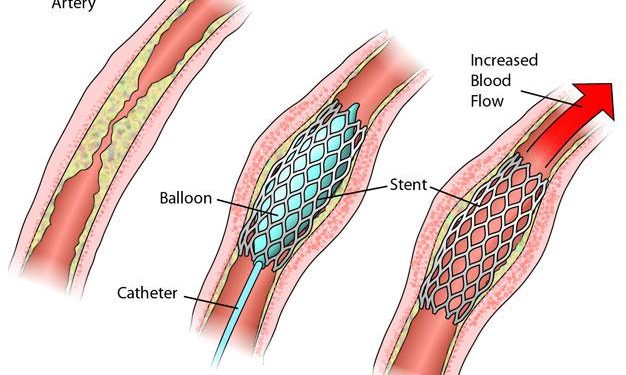Coronary Angioplasty is a surgical procedure that is designed to widen narrowed or blocked coronary arteries. The word angioplasty is referred to using a balloon to stretch open a narrowed or blocked artery. Some modern-day procedures also include inserting a short wire-mesh tube, referred to as a stent, into the artery during surgery. Coronary Angioplasty is used for the treatment of several kinds of heart diseases. It is sometimes referred to as percutaneous transluminal coronary Angioplasty.
When is Coronary Angioplasty Required?
The heart needs a constant supply of blood which is supplied by the coronary arteries. In elderly people, these arteries can get narrowed or hardened, which can cause heart diseases. If the blood flow to the heart stops, it can lead to severe chest pain, which can often be treated with medication, but coronary Angioplasty is far more effective. It is considered to be a safer and better treatment option for heart diseases.
Who Should Get Coronary Angioplasty Done?
When the coronary arteries get narrow or hard, then coronary Angioplasty is used to restore the blood flow. Sometimes, medications and lifestyle changes such as maintaining a healthy diet, avoiding smoking, limiting the intake of alcohol, etc., are enough to improve your health. If these don’t work, then your doctor might suggest other treatment options, including coronary Angioplasty. Treatment depends on the stage of the disease; therefore, your doctor will consider several factors like how severe your blockages are, where they’re located, and other already existing diseases that you might have.
Some advantages of coronary Angioplasty are-
- It has lesser risks than CABG
- It doesn’t need a large cut
- It is performed with medicines that will numb you and help you to relax
- Has a shorter time of recovery
A heart attack happens when the blood flow through the coronary artery is fully blocked. Angioplasty is done during a heart attack to open the blockage caused and also to restore the blood supply through the artery.
Mostly, the blood flow through the coronary arteries gets better after an angioplasty. Many people find their symptoms improving significantly, and they can do much more than they could before the procedure.
Benefits and Risks of Coronary Angioplasty
If you have had a heart attack in the past, an angioplasty can increase your chances of surviving. Angioplasty has several other benefits compared to other treatments of heart diseases-
- It may reduce your chances of having another episode of a heart attack in the future.
- Improves or reduces symptoms such as angina or shortness of breath.
- Reduces the damage to the heart muscle caused due to heart attack.
- Reduces the death risk in some patients.
- Improves the functioning of the kidneys.
With the advantages, there come numerous risks as well. Your level of risk depends on your situation. It may include-
- Artery collapsing
- Damage to the blood vessel
- Allergic reaction
- Heart attack, stroke, or even death
- Side effects from medication or stent
Make sure to take time to weigh the benefits and risks before going ahead with this procedure and then decide if they are the right fit for you.
How is a Coronary Angioplasty Performed?
The procedure of Coronary Angioplasty begins with a local anesthetic, which means you’ll be awake while the process is being done. An incision will be made in your groin, wrist, or arm, and a thin, flexible tube called a catheter will be inserted through it. When it is in position, a thin wire is placed down the length of the affected area of the artery wall, so blood can flow through it more flexibly when the deflated balloon is taken out.
In some cases, a stent is used, which will be around the balloon before it is inserted. It will expand when the balloon is inflated and will remain in place when the balloon is deflated and taken out.
This process usually takes between 30 minutes to 2 hours. There are certain steps you need to take after the process is completed. These are somewhat different for every treatment for heart diseases. You will need to keep away from heavy lifting or driving for at least a few days.
If you have had a heart attack, then you may need to stay in the hospital for several weeks after the angioplasty procedure.
Conclusion
Coronary Angioplasty results in life-enhancing and sometimes even life-saving treatment for heart diseases. Heart attacks and strokes should be treated immediately to prevent damage to the heart muscle, resulting in heart failure. But like any other medical treatment, Coronary Angioplasty has its benefits and risks. Having an angioplasty within the first few hours after having a heart attack may decrease your risk of complications.
Also Read: https://www.nativesdaily.com/liver-transplant-cost-includes-expenditure-on-the-donor-in-india/









![Resolve QuickBooks Error Code 15243 [When Trying to Update] - Featured Image](https://www.nativesdaily.com/wp-content/uploads/2022/05/Resolve-QuickBooks-Error-Code-15243-When-Trying-to-Update-Featured-Image-120x86.jpg)






